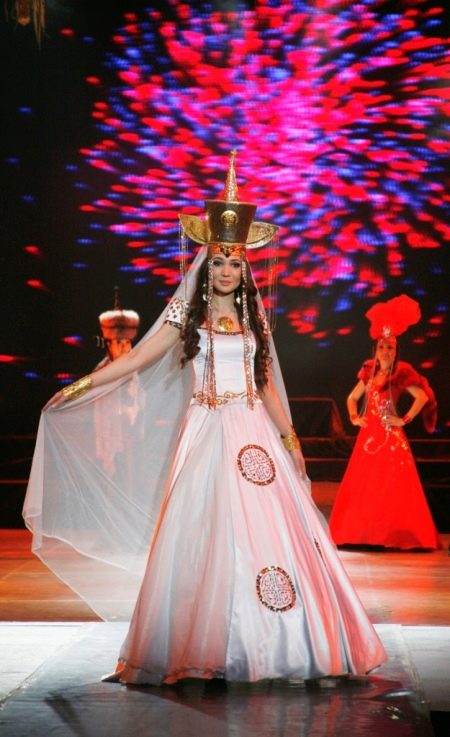National costume of the Buryats

National costume not only reflects belonging to a certain people, ethnos, but also combines the culture of this people. His lifestyle, tradition and identity.
The national costume of the Buryats was no exception and clearly demonstrates the way of life and way of life that has been inherent in this people for many centuries.
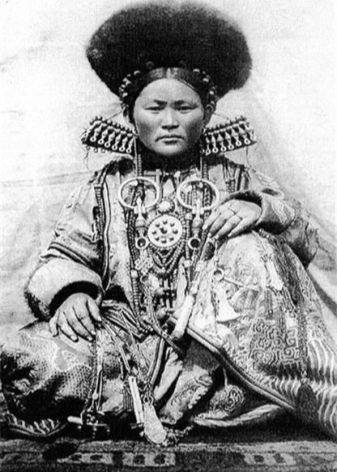
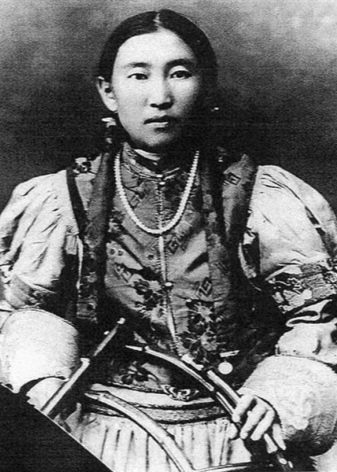
Buryats live in Siberia - the Republic of Buryatia, Irkutsk Oblast and Trans-Baikal Territory. History also knows that there are extensive settlements of Buryats in Inner Mongolia of the PRC, in Mongolia, and Manchuria.
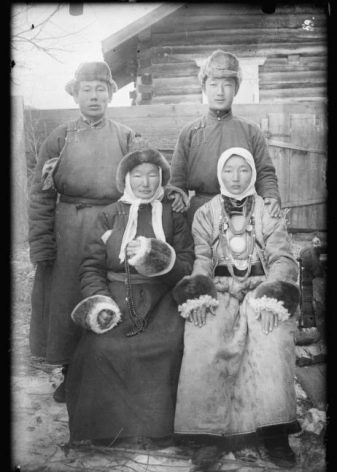
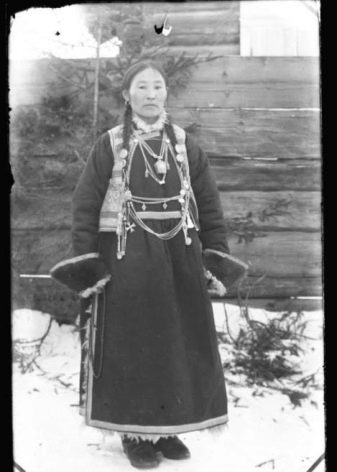
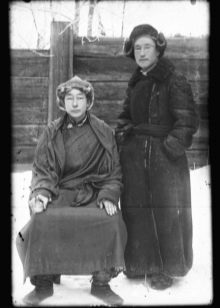
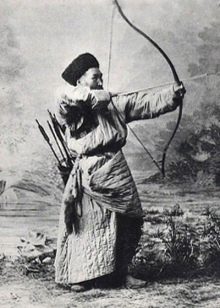
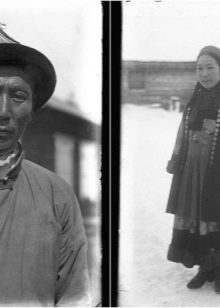
The Buryat costume is akin to many costumes of the Mongol-speaking and Turkic peoples. Buryats have long been nomads, were engaged in cattle breeding and hunting, lived in the harsh Siberian climate. This largely influenced the presence in the national costume of many elements that give convenience and freedom of movement, practicality and all-seasonality.
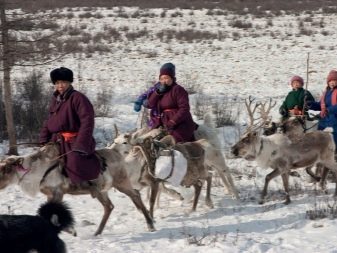
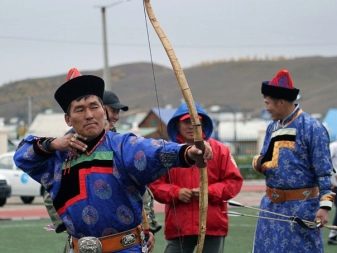
At first, improvised materials were used in the Buryat costume - sheepskin, fur-furs (arctic fox, fox, sable and others), natural leather, wool. Later, with the emergence of trade ties, silk, velvet, cotton, jewelry made of stones, silver, and gold were added to the costume.
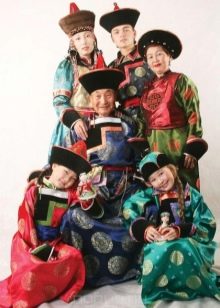

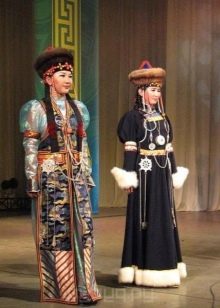
There are also tribal differences in the costume of the Buryats. Conventionally, the Buryats are divided into eastern and western genera relative to Lake Baikal. The traditional religion of the Buryats, shamanism and Lamaism (Buddhism), also brought in their own nuances.
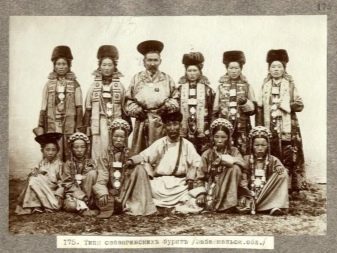

Male national costume of the Buryats
The traditional male daegel in the form of a robe with an upper rim and a lower one was girded with a silk sash, a leather belt decorated with silver and stones. Dagel - the winter version of the dressing gown was sewn from sheepskin, trimmed off the top with a fabric - silk, velvet. The summer version was called tarlig - thinner, without insulation. Everyday dagels were sewn from cotton fabric.
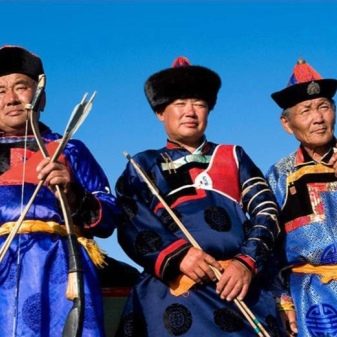
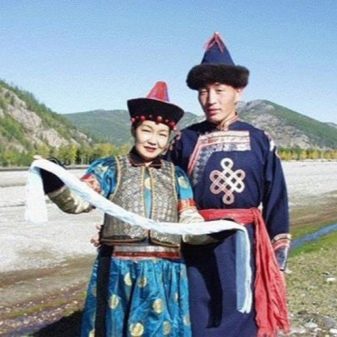
The male daegel was necessarily decorated with three multi-colored stripes on top, called enger. Each color had a special meaning: black - fertile soil, blue - the color of the sky, green - earth, red - purifying fire. Enger stripes had a clear arrangement in colors, the upper stripe could be different in belonging to a certain genus, tribe - Enger was located in steps on the chest.
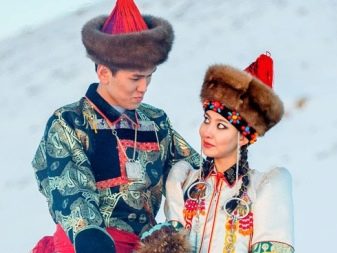

- The collar was made in the form of a stand, the robe itself was not tight-fitting, it gave freedom of movement.
- The Dagel or Terlig sleeves were one-piece for protection from wind and cold. The dressing gown was fastened on the side with buttons. The number of buttons and their arrangement also had a sacred meaning - the three upper buttons on the collar brought happiness, on the shoulders and in the armpit - a symbol of prosperity, the lower buttons at the waist were considered a symbol of honor. The buttons were made of silver, coral, gold.
- The sleeve had a cuff - turuun (hooves) in the form of a cone. In cold weather, the cuff turned away and protected the hands. The front part of the cuff was decorated with embroidery, patterns symbolizing the number of livestock, prosperity.
- The robe was long enough to cover the legs when walking and riding a horse. In addition, it was possible to lie down on one floor of the dagel, and to take cover on the other when wandering.
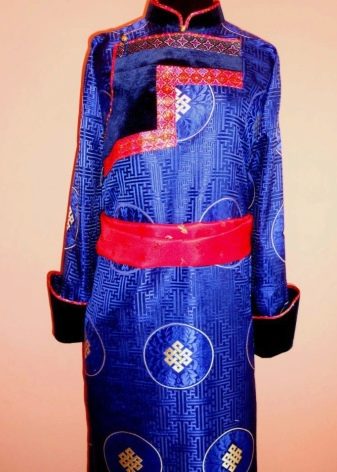
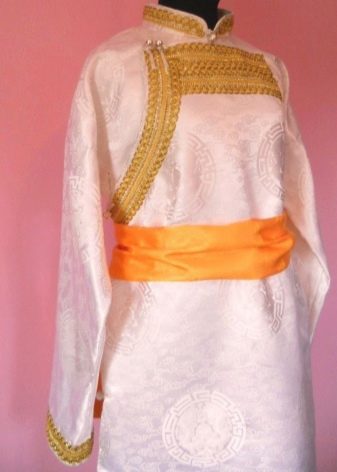
A cotton shirt and pants made of leather and fabric were worn under the daegel or terlig. An obligatory element of a man's suit was a belt. It was sewn from different materials and had different lengths and widths, decorated with stones, silver buckles. A knife, snuff box, and other accessories were worn on the belt.
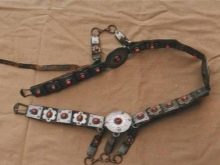

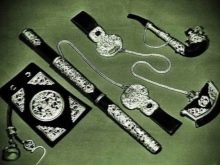
Buryat women's national costume
Women's costume has undergone changes with age. Girls wore regular dagels and teligi with a sash until adolescence.
With the onset of 13-15 years, the cut of the dress changed - it became detachable at the waist, a braid - an ace was sewn on top of the seam.
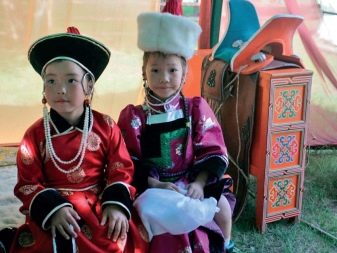
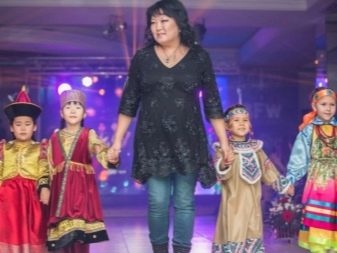
With marriage, a sleeveless jacket was added to a woman's suit. It could be short in the form of a vest or long, depending on belonging to one or another genus. The edges of the vest were decorated in front with ornaments, embroidery, contrasting ribbons or braid.
The undershirt was made of cotton, pants were also worn.

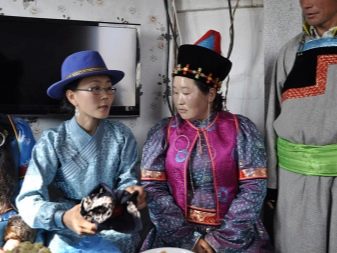
The most complex system was represented by women's jewelry. In addition to traditional earrings, rings, bracelets and neck ornaments, the Buryats also had others - temple rings, breast jewelry, fancy belts, coral beads, and silver pendants. Some genera had shoulder ornaments, side belt pendants, hair ornaments, and amulets. Women's jewelry showed not only belonging to the clan, but also the wealth of the family, social status.
Buryat women's jewelry was made of silver with stones of coral, amber, turquoise and other natural stones. Silver jewelry had filigree forging in the form of national ornaments and patterns.
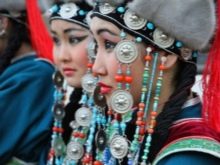
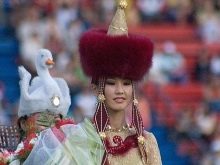
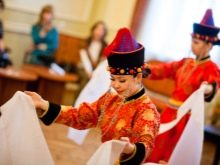
Headdress
Both men and women always wore a headdress. Headdresses were varied and differed from one genus to another.
Among the Western Buryats, the headdress had the shape of a cap, trimmed along the lower edge with fur. The top was sewn of velvet or other fabric, decorated with embroidery, coral beads, braid. Fur was used from otter, deer, lynx, sable.
Also, hats such as earflaps made of fur with long pile were worn - foxes, arctic foxes.
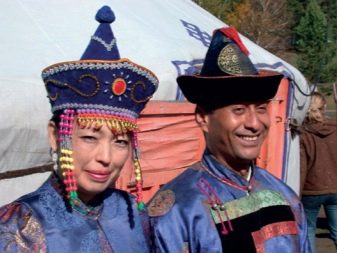
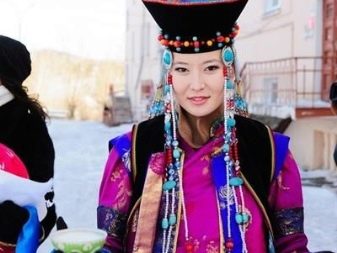
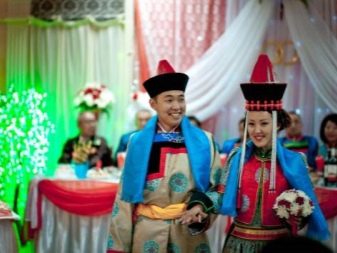
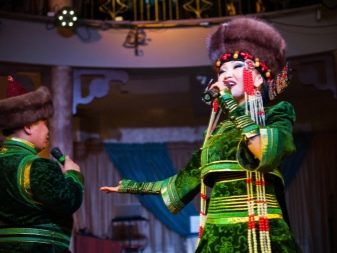
The eastern Buryats had a cone-shaped headdress with a high crown and bent edges. Also popular was a hat in the form of a yurt or a hill with a sharp end decorated with a bead or tassel - the most typical for the inhabitants of Buryatia and Mongolia.
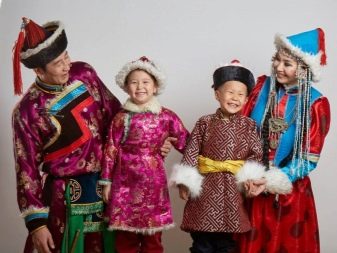
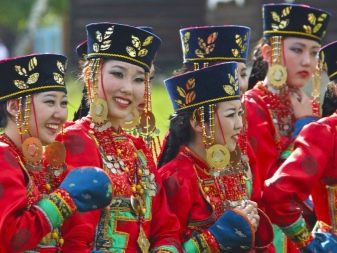
Headdresses also differed in geography of residence - khorin, agin, etc.
The Buryat headdress was a symbol of the sky, vitality and a respectful attitude towards it was brought up. You couldn't throw it on the ground, step over it, treat it disrespectfully.
Shoes
Buryat footwear consisted of leather and felt boots with flat soles with upward curved toes.The curved socks were designed not to harm the earth and living creatures when walking.
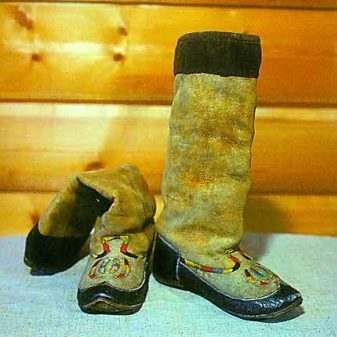
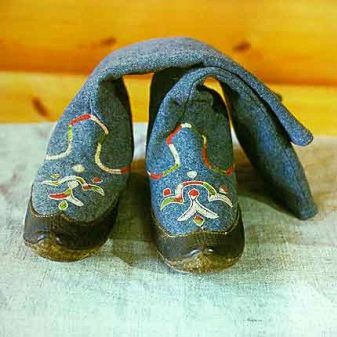
These shoes were worn by both men and women. Genuine leather shoes were comfortable, hygienic and practical. Shoes were decorated with embroidery on the top or with contrasting threads of seams in the form of ornaments and patterns.
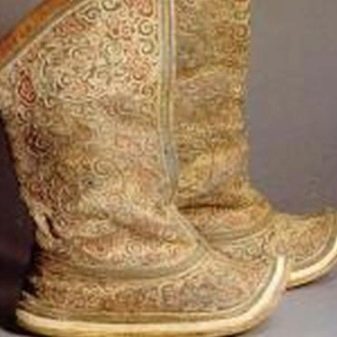
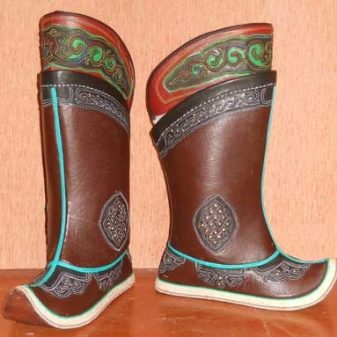
Winter boots were insulated from sheepskin fur, wild animals. Winter options are also presented in the form of high fur boots.

The summer version of the shoe was sewn from horsehair with a flat sole.
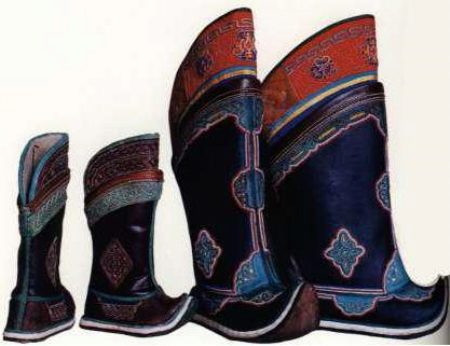
Modern Buryat costume
Modern stylization of the national costume is extremely popular in Buryatia. Stylizations are used for dagel of different lengths, in the form of an evening dress, outerwear. The original cut of sleeves, collars, with inserts with enger - a stepped pattern of colored stripes, cuffs are used.


Also noteworthy are fabrics - silk, satin with patterns and textured embroidery, with interweaving of silver and gold threads, traditional bright colors - blue, red, green, yellow, turquoise.
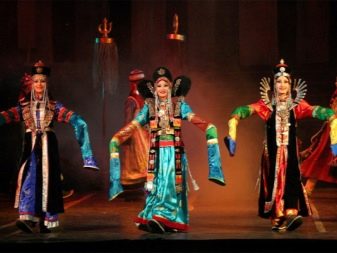
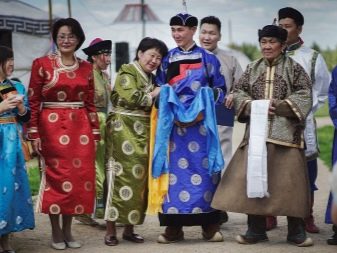
In modern fashion, stylizations of the Buryat costume are popular in the form of an evening dress, blouse, coat, embroidery with ornaments, traditional patterns, satin ribbons and braid are used for decoration. Silver jewelry with coral, turquoise, agate is actively used.
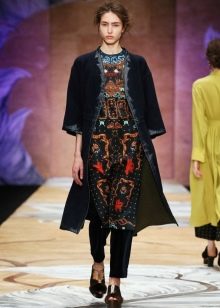


In everyday life, you can increasingly see stylized national shoes in the form of ugg boots, high fur boots, boots. And also hats with fur in the national style combined with natural leather, suede.
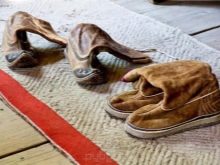
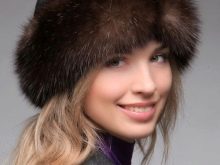
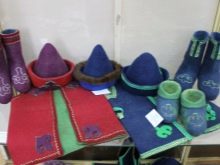
The traditional Buryat costume is worn on major national holidays - Sagaalgan (White month - the onset of the New Year according to the lunar calendar), Surkharban (summer sports holiday), on theatrical performances, religious holidays, and honored guests.
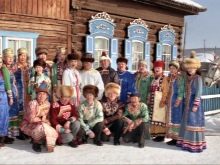
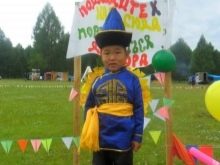

Modern models of wedding dresses in the national style are becoming more and more popular. Many artists use the national Buryat costume for their stage image.
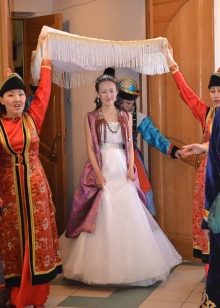
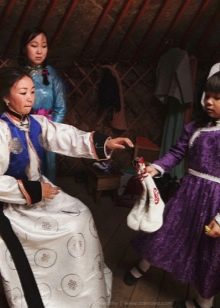
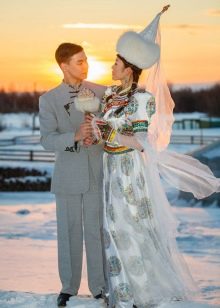
In recent years, interregional contests of fashion designers have begun to be held, using stylization of the national costume and ethnic motives in their collections. Many interesting models from such shows end up in the "masses" and become popular among young people.
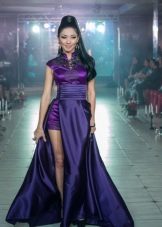


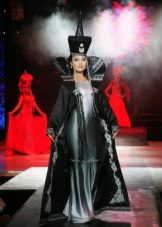
Fashion looks
Unusually warm and cozy models made of sheep wool with the addition of cashmere are very useful in Siberian frosts. It can be a trouser version with a stylized top under the national Buryat costume - a stand-up collar, a stepped bead on the chest, an unusual sleeve, and a hood. Or this is an option with a soft silhouette, tight-fitting, but not restricting movement, with a maxi-length skirt or dress, with ethnic patterns. Wool is a thin and original material that gives warmth in cold weather and breathable in heat. By adding an original ethnic style headdress, your image will become unforgettable.
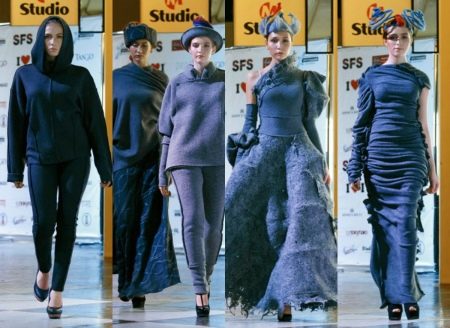
An original outfit in white with silver contrasting decoration in the form of piping and accents will suit both an evening out and as a wedding dress. The interesting design of the bodice and the asymmetry of the shoulder with silver piping looks like a stepped Anger insert, the side ornament at the waist and in the place where the cape is attached gives ethnicity and airiness to the image. The vertical silver stripe on the skirt again evokes national motives. At the same time, the length of the dress above the knee does not look provocative. By adding unique head jewelry with silver side charms, you will definitely be irresistible.

Another look for an evening out or a wedding celebration in white with gold will be unforgettable. From the national Buryat costume there is a cut-off skirt with a top, original gold embroidery in the form of an ornament, national jewelry - bracelets, a breast necklace and a rich headdress. The dress has a short sleeve, trimmed with gold piping, like the bodice. A golden high headdress with an ornament on the forehead and pendants adds femininity, stateliness and chic.The splendor and length of the skirt will emphasize the slimness of the waist.
